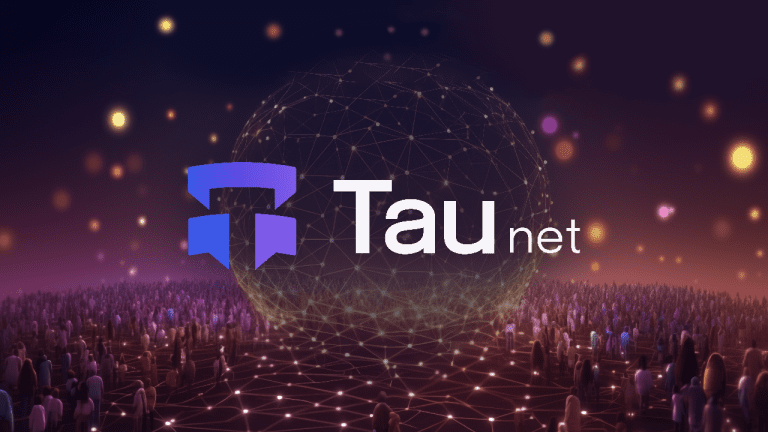MAS’ Ravi Menon Calls Cryptocurrencies a Failure, Backs CBDCs and Stablecoins
November 21, 2023 | by stockcoin.net

MAS’ Ravi Menon Calls Cryptocurrencies a Failure, Backs CBDCs and Stablecoins
In a speech at the Singapore Fintech Festival, MAS’ Managing Director Ravi Menon expressed his belief that cryptocurrencies have failed as digital money. Instead, Menon backs central bank digital currencies (CBDCs) and well-regulated stablecoins as the future of the financial ecosystem. He cited the poor performance of cryptocurrencies as a medium of exchange or store of value, their volatile prices, and the significant losses suffered by many investors. Menon emphasized the potential of well-regulated stablecoins to complement CBDCs and tokenized bank liabilities. He also highlighted Singapore’s pursuit of becoming a digital assets hub and discussed the various ways technology can be harnessed beyond crypto speculation. Menon shared MAS’ vision of a network of interoperable systems that enable instantaneous and seamless payment, clearing, and settlement. He further announced the launch of the Global Layer One (GL1) initiative to address the challenges faced by existing digital asset networks.
▶ [Kucoin] Transaction fee 0% discount CODE◀
Introduction
Welcome to this comprehensive article on the future of digital money and the role of cryptocurrencies in that future. In this article, we will explore why cryptocurrencies are considered a failure, the contenders for digital money, and the potential of stablecoins backed by the Monetary Authority of Singapore (MAS). We will also delve into Singapore’s position as a digital assets hub and its vision for interoperable systems. Additionally, we will discuss the Global Layer One initiative and the broader purpose of FinTech in improving people’s lives.
▶ [Kucoin] Transaction fee 0% discount CODE◀
Cryptocurrencies as a Failure
Cryptocurrencies have faced criticism for their poor performance as a medium of exchange and a store of value. Despite their rising popularity, cryptocurrencies have struggled to gain widespread acceptance as a means of conducting transactions. Their decentralized nature and scalability issues have hindered their ability to provide a seamless and efficient payment system. Furthermore, cryptocurrencies have also fallen short in their role as a store of value, with sharp speculative swings in prices undermining their stability.
Investors in cryptocurrencies have faced significant losses due to the volatile nature of the market. The unpredictable price fluctuations make cryptocurrencies a risky investment, causing many individuals to lose faith in their long-term viability as a reliable asset class. These factors have contributed to the view that cryptocurrencies have failed the test of digital money.
The Future of Digital Money
Despite the shortcomings of cryptocurrencies, the future of digital money looks promising with the emergence of various contenders. These contenders include privately issued cryptocurrencies, central bank digital currencies (CBDCs), tokenized bank liabilities, and well-regulated stablecoins. Each of these contenders offers unique features and potential benefits that could contribute to the evolution of digital money.
Privately Issued Cryptocurrencies
Privately issued cryptocurrencies, such as Bitcoin, have been at the forefront of the digital money revolution. While they have faced criticism for their shortcomings, they have also paved the way for innovations in the financial sector. However, their decentralized nature and lack of regulatory oversight have limited their potential as a widely adopted form of digital money.
CBDCs
Central bank digital currencies (CBDCs) are digital representations of a country’s fiat currency issued and regulated by the central bank. CBDCs have gained traction as a potential solution for the shortcomings of cryptocurrencies. With the backing of the central bank, CBDCs offer the potential for improved efficiency, security, and financial inclusion. However, there are challenges to be addressed, such as privacy concerns and the need for robust technological infrastructure.
Tokenized Bank Liabilities
Tokenized bank liabilities involve the digitization of traditional banking instruments, such as deposits or certificates of deposit (CDs). By tokenizing these assets, they can be securely and efficiently transferred on blockchain networks. This innovation could enhance liquidity and streamline cross-border transactions. However, the success of tokenized bank liabilities relies on regulatory frameworks and industry acceptance.
Well-Regulated Stablecoins
Stablecoins are cryptocurrencies that are designed to maintain a stable value by being pegged to a reserve asset, such as a fiat currency or a basket of assets. Well-regulated stablecoins, backed by MAS, offer stability and the potential for seamless transactions. By addressing the volatility and scalability issues of cryptocurrencies, stablecoins have the potential to serve as a reliable form of digital money.
Backed by MAS: Stablecoins as a Digital Currency
MAS sees well-regulated stablecoins as a promising digital currency that can complement CBDCs and tokenized bank liabilities. By providing stability, security, and regulatory oversight, stablecoins can address the shortcomings of cryptocurrencies and contribute to the future of digital money. Examples of promising stablecoins include StraitsX’s stablecoin and Paxos Digital’s USD-pegged stablecoin.
Singapore as a Digital Assets Hub
Singapore has positioned itself as a digital assets hub, with a preference for digital assets over cryptocurrencies. Regulators in Singapore recognize the potential of blockchain technology and its applications beyond speculation. The nation is focused on using technology to solve real-world problems and improve financial infrastructure.
Ways to Use Technology Aside from Speculation
Technology, specifically blockchain and distributed ledger technology (DLT), can be leveraged to enhance financial processes, such as payments, clearing, and settlement. By adopting these technologies, financial transactions can be conducted instantaneously and seamlessly. Singapore is actively exploring the transformative features of digital assets and their potential to revolutionize financial systems.
Project Guardian: Tokenization of Foreign Exchange, Bonds, and Funds
Project Guardian, led by MAS and industry partners, aims to tokenize foreign exchange, bonds, and funds. This initiative is driven by the goal of enhancing global liquidity, streamlining cross-border transactions, and improving operational efficiency in financial markets. Trials conducted by major global banks highlight the potential for tokenization to revolutionize traditional financial instruments.
The Vision of Interoperable Systems
Singapore envisions a network of interoperable systems that enable seamless payment, clearing, and settlement across the world. The transformative features of digital assets, such as their ability to facilitate instant and secure transactions, can contribute to the realization of this vision. Interoperable systems have the potential to revolutionize financial transactions on a global scale.
Singapore’s Global Layer One Initiative
Existing digital asset networks face challenges, such as lack of accountability, legal uncertainty, and interoperability issues. To address these challenges, MAS is launching the Global Layer One (GL1) initiative. GL1 aims to create a global public good that facilitates seamless cross-border transactions and enables the trading of tokenized assets across global liquidity pools while complying with regulatory requirements.
Challenges Faced by Existing Digital Asset Networks
Existing digital asset networks, whether public permissionless blockchains or private permissioned blockchains, encounter challenges that limit their suitability as a global digital asset infrastructure. These challenges range from issues of accountability and governance to legal uncertainties surrounding the use of blockchain technology. Overcoming these challenges is crucial to achieving a secure and efficient global digital asset infrastructure.
Introduction of Global Layer One as a Solution
The Global Layer One initiative, introduced by MAS, seeks to address the challenges faced by existing digital asset networks. By providing a framework for accountability, legal certainty, and interoperability, GL1 aims to create a robust global digital asset infrastructure. This initiative highlights Singapore’s commitment to fostering innovation and pioneering solutions in the FinTech space.
FinTech with a Larger Purpose
Singapore’s approach to FinTech goes beyond mere speculation and focuses on solving real-world problems and improving people’s lives. The integration of digital assets, digital money, and a foundational digital infrastructure has the potential to revolutionize financial transactions. By leveraging technology in a purposeful manner, FinTech can contribute to a more seamless and inclusive global financial ecosystem.
Focus on Solving Real-World Problems
Singapore’s emphasis on solving real-world problems through technology highlights the nation’s commitment to progress and innovation. FinTech solutions are developed with a specific focus on addressing the needs and challenges of individuals and businesses. By targeting real-world problems, FinTech has the potential to make a meaningful impact on society and improve the quality of life for individuals.
Improving People’s Lives with Digital Assets and Infrastructure
Digital assets and infrastructure offer immense potential for improving people’s lives. By providing easier access to financial services, enhancing efficiency in transactions, and fostering financial inclusion, digital assets can empower individuals and businesses. Singapore’s focus on digital assets and infrastructure reflects the nation’s dedication to leveraging technology for the betterment of society.
Conclusion
As cryptocurrencies face criticism for their poor performance as digital money, the future of digital money lies in stablecoins, CBDCs, tokenized bank liabilities, and other well-regulated digital currencies. MAS’s support for stablecoins as a complement to CBDCs and tokenized bank liabilities demonstrates Singapore’s commitment to innovation and progress in the financial industry. With initiatives like Project Guardian and the Global Layer One, Singapore aims to create a seamless and interoperable global digital asset infrastructure. Through its focus on solving real-world problems and improving lives, Singapore exemplifies the larger purpose of FinTech. The integration of digital assets and infrastructure has the potential to transform financial transactions and enhance the well-being of individuals worldwide.
▶ [Kucoin] Transaction fee 0% discount CODE◀

RELATED POSTS
View all





